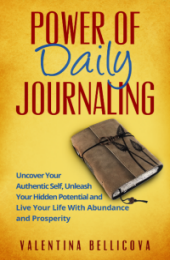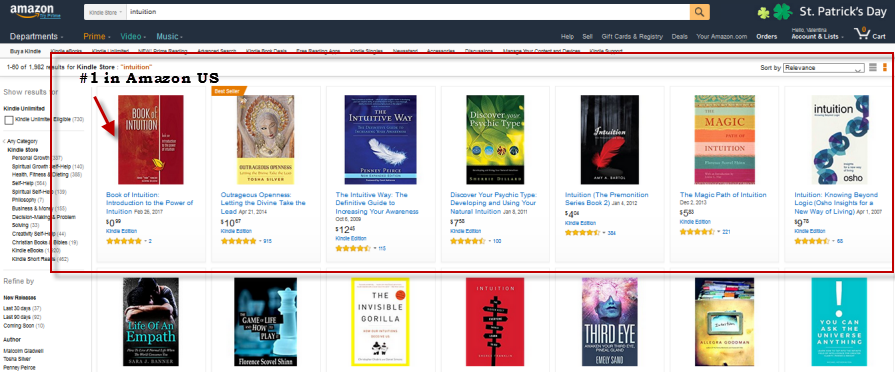Fifty Shades of Publishing
Fifty shades of Publishing.
The Publishing Industry, just like any other industry, is a world of its own, and just like any other industry has its own language and terminology. To the uninitiated what seems to be so obvious, is in fact, not. In publishing there are as many definitions and nuances as the subject of Fifty Shades of Grey has – only I look at it as fifty shades of publishing.
Take the term self-publishing or self-publish. Seems obvious, i.e., you, the author, write and publish your own work and put it up for sale.
Simple enough.
I thought so too. After all that is exactly what I did when I wrote and published my first book, Power of Daily Journaling. I bought a course, followed it to a T and voila! just like that I had a short eBook on the digital shelves of Amazon. All within one month, I might add.
Fast forward to a conversation I had with someone I recently met. She was both astounded and impressed that I had a book out, that I wrote it, published it, and that, miracle of miracles, it was actually selling.
How much did all that cost me, she wanted to know.
Huh? Cost? Ummm … nothing.
She was aghast.
She then told me her story.
She had a book in her. From the get-go she felt that going to the traditional publishing houses would get her nothing more than a boxful rejection slips, if, even that. More than likely her idea (not yet even a manuscript) would get short shrift and unceremoniously filed in the circular file.
Friends suggested that she “self-publish” and helpfully gave her the names of a few publishing houses that she could approach.
“But of course, we can do that” was the reply she got from each and every one!
Oh joy!
Oh wait!
For only a few thousand dollars you say!
Now you must understand that my friend is an artist at heart, an independent graphics designer by profession. And while not exactly a starving artist, shelling out thousands in hard earned buckaroos to have a book published was not in zee budget.
The “book” languished in her dreams for, by that time, nine long years!
Still early in my newly found publishing career, I was confused. Dug in and did some research. Reached out to a wider scope of authors and along the way discovered that the world of publishing has as many shades of grey as the colossally successful book’s title suggests.
Along with many other terms commonly bandied about, I found out that the term self-publishing was a hybrid of sorts and did not automatically mean what I thought it did.
What then, exactly, is a self-published book?
Before diving into the world of self-publishing, let’s take a quick review of publishing.
Traditional Publishing aka TRADS
Book publishing has a long and storied past, one might argue that it could even include the etchings of pictographs discovered in ancient cave dwellings, they did after all, tell a story of sorts, and give us a better understanding of what life on earth may have looked like all those thousands of years ago. In today’s vernacular those cave etchings could fall in to the information publishing/marketing niche … ok, bit of a stretch!
Cave etchings, papyrus paper hieroglyphics, wood block prints, monk-scribed copies of the bible were all in their day a publishing system. Tedious and time consuming.
In 1540, Johannes Guttenberg invented a printing machine, the Guttenberg Press which revolutionized how society gathered, published and distributed information that chronicled historical events, educational content, and books. It was the harbinger of today’s traditional publishing system.
As recently as 20 years ago, traditional publishing houses ruled the roost when it came to gathering, collating, publishing and distributing information on the life and times of the world as it unfolded before us. Newspapers, magazines and books: these were the main products. We bought them, read them, and sometimes even wrote them.
When we think about publishing it is most often that books come to mind, or, is that vice versa? We seldom think about publishing but hold a book in your hand and instantly there is a connection.
Books hold promise of forever after. Write a book and it will live well past your life. Future generations will be enlightened, entertained and perhaps educated by what you wrote. Typically, authors sent their manuscripts to a traditional publishing house such as Penguin Random House, Simon and Schuster or to one of their many subsidiary arms of publishing. The process was and still is tedious, time consuming and more often than not, results in an outright notice of rejection. Hope being eternal, the author repeats the process, again and again and again. Sometimes, tenacity pays off and the writer is offered a contract.
The advantage of being published by a Traditional Publishing House (TRAD) is that the publisher takes on the full financial risk. To sweeten the deal an “advance” payment is given to the author with promise of future royalties embedded in the contract. Should the book not sell as well as anticipated, the author is not expected to return any portion of the advance.
The disadvantage of being published by a TRAD is that you are now merely the author. The House owns your content and all decisions relative to editing, pricing and distribution is made by them. All rights belong to the House. Marketing is a moot point but most frequently left to the author or author’s agent. Contrary to popular belief, book advances are typically in the four-figure range so if millions of dollars are dancing in front of your eyes, one word: FUGGETABOUTIT! Those million dollar advances are reserved for authors with proven chops, celebrities and increasingly politicians.
As mentioned earlier, until recently that was the system. There were no other options. It was the Traditional Publishing way or no way.
These days, not so much.
Just as the Guttenberg Press revolutionized monk-scribed bibles and books, technology and the advent of the internet changed the game of publishing. Suddenly there were optional venues a writer could look into. Welcome self-publishing. For an intro to self-publishing visit my blog on The Art of Self-Publishing & Why Authors Choose to Self-Publish
Self-Publishing
After my conversation with friend, I dug into why the cost and what on earth she was talking about. Holy guacamole! There was self-publishing, self-publishing and more of the same but each one with a different shade of grey.
Kith and kin to the Traditional Publishing, self-publishing houses have sprung up like mushrooms on a fall day in the forest. Mostly they have shed the rigorous system of the TRADS and pretty much replaced it with a “Have Money? Will Publish” maxim. Where there is money to be made, new players step up to the plate.
Vanity Press
Vanity press was the forerunner of self-publishing. A pay-to-publish model, it first appeared in the 1920’s and 1930’s. Laser focused and no bones about it, its market was the author whose manuscript did not pass muster with the Trads and who would pay anything to see their name in print. And of those there were plenty.
Venal in concept, quickly stigmatized, avoided at all costs by “real” authors and yet, against all conventional odds, the vanity press industry flourished.
Dang the stigma! Damn the cost. Vanity was at stake. Scorned authors thumbed their noses at their colleagues and the traditional publishing houses, pulled out their checkbooks, wrote the amount and got published.
Vanity press has come a long way since those heady days of yesteryear but the stigma lingers on. To side-step the negative connotation, vanity press has co-opted into the more acceptable term: self-publishing.
Hybrid Self-Publishing
Some self-publishing houses offer the full meal deal, including if needed, someone to ghost write your book. Some give you an a la carte menu of services to choose from, and yet some will even pay royalties. Sounds good right?
Not so fast Ninotchka!
Selected items from the menu easily add up and before you know it, you’re looking at a bill of a several thou or more. Check the items carefully, and most importantly pay attention to who owns the rights to your body of work, If it is published under their ISBN number, chances are that it is they who own it, at least for the duration of the contract.
Increasingly, authors are taking control of their publishing. It is true, no author can write, edit, market, publish and distribute entirely on their own and do a great job of it. But an author can outsource to freelancers who help carry the load for the independent self-publishing “Indie” author.
Next week, we’ll look at what tasks can be outsourced, which are an absolute, and which are nice add-on.



